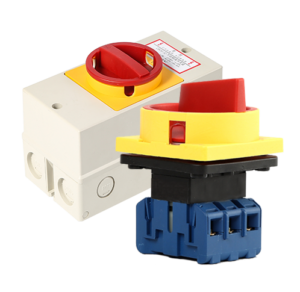 Salutations
SalutationsRotary Cam Switch Functionality
A rotary cam switch uses shaft rotation for operation. The shaft's movement coordinates with a cam to manage contacts either simultaneously or separately based on structure. The number of shaft positions allows various contact combinations.
Common applications involve automation and consumer gadgets. They adapt to different electrical load and current conditions. Visual and tactile cues like LEDs and detents enhance usage.
- Prevalent in machinery controls and consumer gear
- Wide load acceptance allows flexible usage
Safety Protocols for Disconnect Switches
They constitute a key element in electrical hazard prevention. They enable disconnection of specific electrical lines. Power cutoff ensures safe component servicing. Deactivate the disconnect switch prior to maintenance. Faulty use leads to serious safety issues.
Implement vital safety measures during use: Locate the specific disconnect for your work area. Confirm the circuit is powered down prior to operation. Don safety gear and insulated tools for security. Switch on the disconnect and ensure circuit functionality.
- Often evaluate wear and breakdown indicators
- Maintain dryness and cleanliness to prevent rust
- Engage qualified personnel for consultations
Role of Isolator Switches
An isolator switch provides essential power disconnection in electrical systems. Isolators function to purely disconnect power while others protect. Isolating circuits protects personnel during servicing.
- Isolator switches enable safe equipment diagnostics
- Visual signals display switch state for safety
- Isolators contribute significantly to workplace safety
Fluid Power Changeover
Efficient transfer switches copyright power consistency. Swift switching between power feeds is essential. They ensure operational continuity without break. Time without power is negligible due to improvements. Used extensively in setups needing redundant energy. They automatically manage energy source changes
Essential Cam Switch Insights
Insight into cam switches simplifies circuit operation. They utilize turning handles to activate contacts. They permit precise control across circuit pathways. Switch function reliability depends on the cam design. They excel in environments requiring accuracy and strength
- Comprehending switch framework assists in maintenance
- Knowledge of contacts aids in switch assembly
- Awareness of technical details supports reliable functioning
Disconnect Switches Importance
They provide vital safety in electrical infrastructure. These devices enable breaking current through circuits. They provide means for maintenance without hazards. Numerous types exist tailored for various applications
- Frequent use of standard switches occurs in manufacturing
- Load break isolates circuits under operating load
- Vacuum-based isolators improve arc suppression
- They harness air gaps to cease current flows
Identifying disconnect variants assists selection. Studying ratings and situations ensures reliable function
Deciding on Suitable Isolation Device
Evaluating isolator options involves inspecting key factors. These include the electrical current or amperage load. Analyzing voltage criteria influences isolator selection. Cycle frequency is critical for application. Dimensions and structural traits guide selection. Use of protective materials guards against hazards. Comprehensive review leads to the most appropriate isolator.
Changeover Switches in Manufacturing
Industrial environments rely on changeover switches. Seamless power transition between circuits is their function. Switches contribute to electricity distribution and stability. Used in motor circuits and power supply management. Changeover switches are key for stable industrial operations
Understanding Differences Between Switch Types
Proper choice requires awareness of device roles. Rotary cams allow configuration of many switch states. Disconnect devices enable safe power break. They maintain protection during servicing. They feature greater mechanical strength and current ratings
Fault Diagnosis for Electrical Switches
Common malfunctions include poor connections. Examine terminal connections and ensure firmness. Electrical flickering might arise from defective switches or lamps. Look for physical defects or age-related deterioration in switches. Investigate fuse and breaker states to maintain functionality. Qualified technicians are needed for ongoing difficulties
Architecture and Function of Rotary Cam Switches
Designed to manage power, rotary cam switches employ mechanical parts. Operation is driven by a turning shaft engaging contacts. Rotation sequentially opens or closes these contacts to switch circuits. Switch performance depends on cam profile design. Sophisticated cams allow numerous selectable positions
They find application in numerous industrial and commercial settings. Found in machinery, consumer electronics, automotive and telecommunications sectors.
- Switch size, contact number, component selection and environment matter
